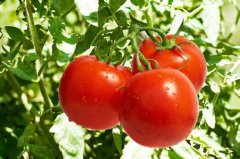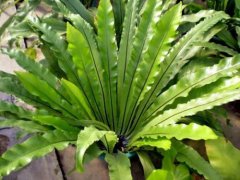Litchi planting technology and management, litchi varieties can be classified in this way how to fertilize and irrigate litchi
Litchi, a kind of fruit, is loved by many people. Do you like eating litchi? Do you want to grow your own litchi?
Litchi fruit has large heart shape, smooth fruit spines, dark red pericarp, sweet juice, large kernel, medium quality, high yield, late March and late June maturity. From 30 to 40 days after anthesis, the pulp began to develop, and after the seed stopped developing, the pulp grew rapidly and reached maturity at about 80 days, and the pericarp turned red and black.
It can be divided into four categories according to the fruit ripening period:
1. Very precocious: such as March Red
2. Precocious: such as jade lotus bud, Kaohsiung precocious birth
3. Medium ripe: such as black leaves, bunker kernels
4. Late ripening: such as glutinous rice, Gangwei, Guiwei, Huai Li.
Cultivation and management
(1) soil and climate
Litchi soil selection is not strict, drainage is good, underground soil with irrigation water source is more suitable, the ideal range of soil pH value should be maintained between pH5.0 ~ 6.5. Litchi is suitable for cultivation in subtropical climate.
(2) planting period, mode and density
Litchi can be planted all year round as long as there is a source of water for irrigation. The depth and width of the planting hole should be at least 70 cm. A large amount of mature compost should be mixed with the soil during planting and should be fully irrigated after planting. A pillar can be set up for windbreak and the trunk can be fixed. The distance between rows and plants is 4-6 m × 4-6 m. When the plant grows up, it must be pruned properly to control the height of the plant. If the dwarfing cultivation is carried out, it can be planted slightly closely, about 3m × 3m or 4m × 3m, and the plant height is maintained at about 2m. If it is too high, the tree is easy to shade each other and affect the tree potential.
(3) pruning
The pruning of young trees is mainly to cultivate tree shape, which is moderately pruned after planting and cultivated into 3-5 main branches, which develops naturally and forms a tree shape, and enters the fruiting stage 2 ~ 3 years after planting. In the pruning of adult trees, dense branches, thin and weak branches, and withered branches are properly trimmed after harvest.
In addition to dwarfing the tree shape, pruning will remove the weak twigs inside the crown, which can not fully accept the sun, increase the light area of the crown and make the air circulate, so as to reduce the occurrence of diseases and insect pests.
(4) Irrigation
1. Flower bud differentiation period: about 10-2 months litchi new shoots stop growing, drying is conducive to flower bud germination, this period is not suitable for irrigation.
two。 Flowering: around March, florets begin to bloom, which requires proper irrigation to avoid falling flowers.
3. Fruiting period: April is the period of small fruit development, which requires sufficient water.
4. Growth period: it should be irrigated 2-4 times a month to promote the growth of new shoots in order to cultivate fruiting branches in the following year.
(5) Fertilizer management: chemical fertilizers are the main fertilizers, supplemented by organic fertilizers, so as to supplement trace elements.
1. Fertilization period: the amount and times of fertilizer application of litchi vary according to the age of the tree, and the cultivation of young trees is mainly to develop the shape of the tree in order to achieve the fruiting stage as soon as possible. The fertilization of young trees can be divided into three times a year, which can be used according to the amount of the whole year, or it can be replaced by Taifei No. 5 compound fertilizer. It is suitable for adult trees to apply 3 pedicel 4 per year twice a year after heading, and fertilize immediately after harvest for the second time, which is 1 pear 4 per year. In order to improve soil quality and fruit quality, compost should be applied appropriately.
two。 Fertilization method: use wheel or strip method, but not too close to the trunk, so as not to cause fat injury.

- Prev

The basic planting methods of tomatoes, how to choose varieties and eliminate the problems of planting tomatoes.
Tomato is a vegetable we often eat now, and it is also on the market all the year round. Do you know how to grow it? If you want to know, let's take a look at it. How to choose tomato varieties may make people feel
- Next

How to grow sesame flower? Introduction to the Environmental conditions of Flower cultivation and the Management of Water and Fertilizer
All varieties of Fructus thunbergii can be planted on different cultivation containers or serpentine pillars (boards), but the varieties of round leaf, feather leaf, wave mountain and Yuwei mountain are more cultivated with peculiar leaf shape. Next, let's take a look at the species of Perilla frutescens.
Related
- The first cup of black tea in spring, the flavor and history of tea gardens in Kenya, Africa
- The computer can not only choose potatoes, but also grow tea rice. AI will grow winter oolong tea champion.
- It is not only the inflated tea bitten by insects, but also engraved with the four seasons tea in Beipu.
- The Oriental Beauty Tea Festival in Zhuxian County takes the stage at the weekend to experience the plus-size feast of oil tea.
- & quot; Oriental Beauty Tea & Exploration of Emei in Hsinchu, the hometown of quot;
- The new variety of strawberry "Tainong 1" dessert is the first choice with mellow aroma. Crimson gorgeous
- History of Tea in Taiwan: from Wild Inner Mountain to Export Tea Garden
- Two types of Taiwan Oriental Beauty Black Tea won the British three-Star Award for Childhood Tea Xiang Zhang Jiaqi changed from pilot to champion tea maker.
- Banana species and varieties: the planting history of Taiwan Xianren banana and dwarf banana is long, is banana disease resistant?
- Coffee planting Technology: Qianjie Coffee from Seedling to harvesting

